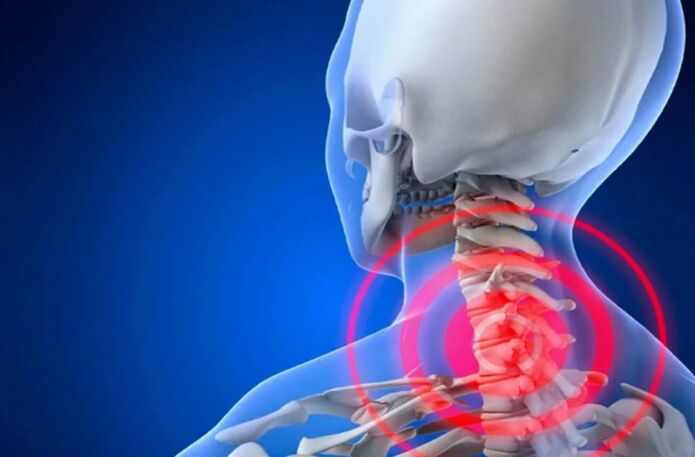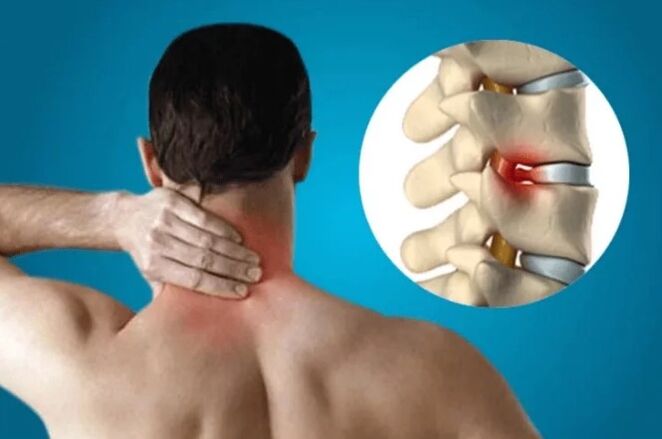The osteochondrosis of the cervical column occurs due to pathological changes in the intervertebral discs. They weaken, become thinner, lose elasticity, ceasing to protect the vertebrae from the damage and losing the ability to provide them with sufficient mobility. The main danger of cervical osteochondrosis is that the disease affects the nerve endings of the spinal region, due to which there is a violation of the flow of blood in the brain.

Types and classification
Different phases of osteochondosis of the cervical column are distinguished:
- First: initial changes in the fabric of the cartilage of the intervertebral disc;
- Second: the beginning of the thinning of the disc, a decrease in the distance between the vertebrae;
- Third: destruction of the disc, the beginning of the deformation of the spine;
- Fourth: strong deformation of the spine.
Causes
The main cause of cervical osteochondrosis lies in the structure of the spine in this area. All the vertebrae here adapt strictly and easily move even with minor loads.
Given how mobile the cervical region is, it is not surprising that the disease is so widespread.
Causes the beginning of the disease:
- Congenital anatomical characteristics (in people with a long neck, osteochondrosis occurs more often);
- violation of the digestibility of minerals;
- hormonal deviations;
- Lack of sufficient muscle corset in the neck and shoulders;
- Hypodynamia;
- cervical lesions;
- hypothermia;
- posture disorders;
- Excess weight.

Symptoms
- Often the first symptom of cervical osteochondrosis is a headache. It can be very strong, which flows as migraine, accompanied by dizziness and madhouse.
- The appearance of "flies", dark spots, tavalche in front of the eyes and a decrease in vision are characteristic.
- The pain in the neck with this disease gives the back of the head, forehead, ears, intensifies when the position of the head changes.
- The numbness of the hand is often noticed.
- There is noise in the ears, loss of hearing.
- A violation of the coordination of the movement can occur, fainting.
Diagnostics
To identify the osteochondrosis of the cervical column, they perform:
- X -ray that determines the condition of the vertebrae;
- computerized tomography, to identify the damage to the disc;
- Dopplerography that establishes blood flow disorders;
- Duplex scan showing the state of the blood vessels.
Treatment
As an ambulance for cervical osteochondrosis, anti -solorific and anti -inflammatory drugs are needed. Depending on the strength of pain syndrome, local drugs (ointments and gels), tablets or injections are used.

Also appointed:
- Vitamin therapy (B vitamins);
- drugs that relieve muscle spasm,
- Condroprotector;
- physiotherapy procedures (electrophoresis, paraffin, magnetotherapy and others);
- medical gymnastics;
- Massage and car --max.























